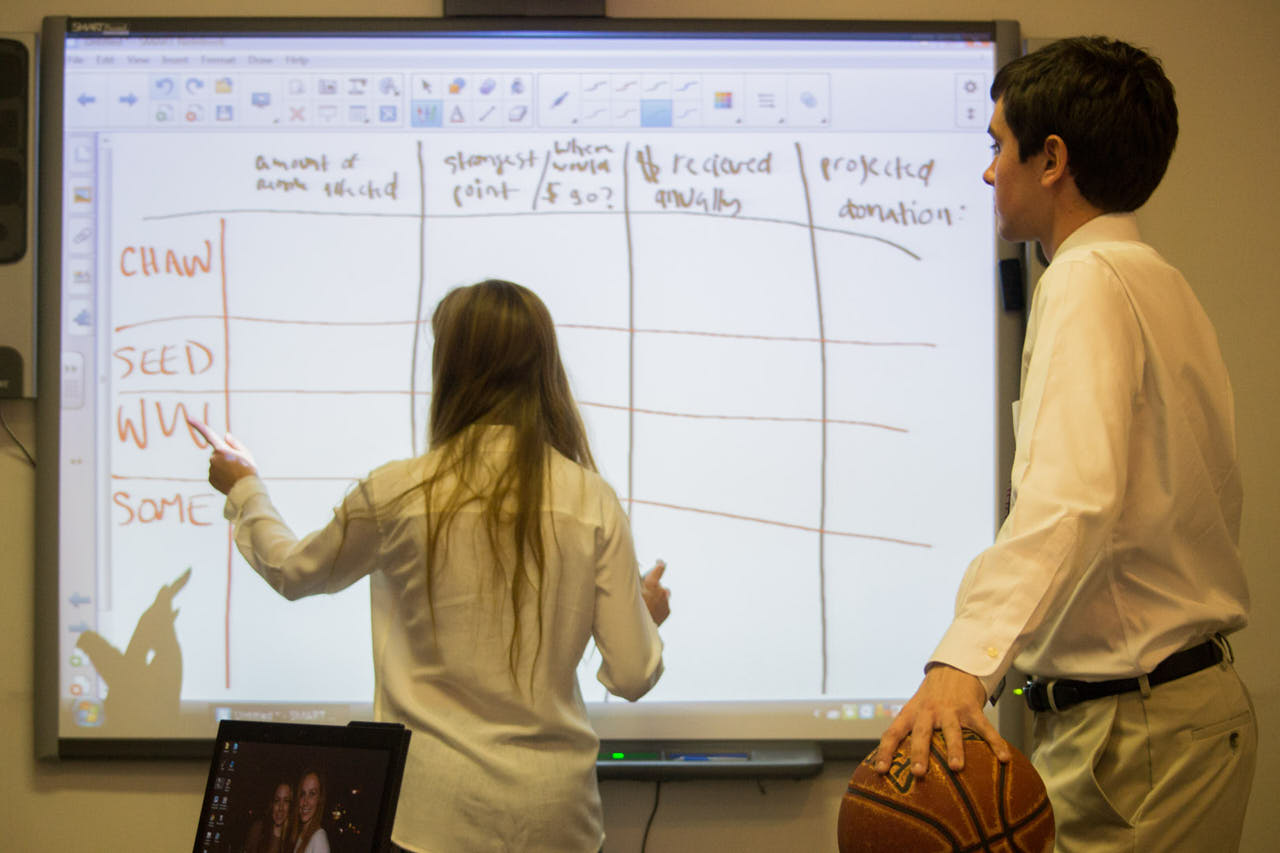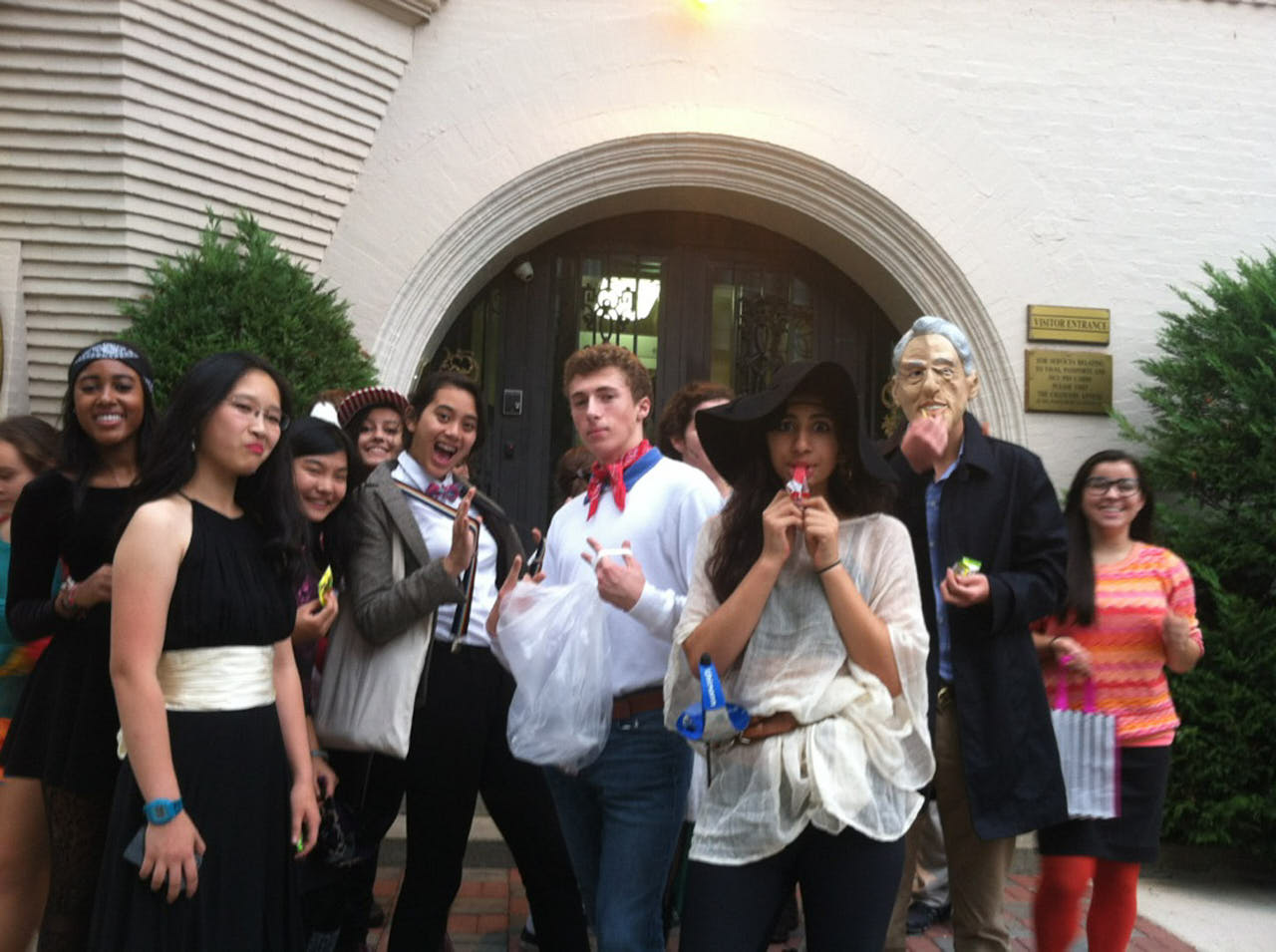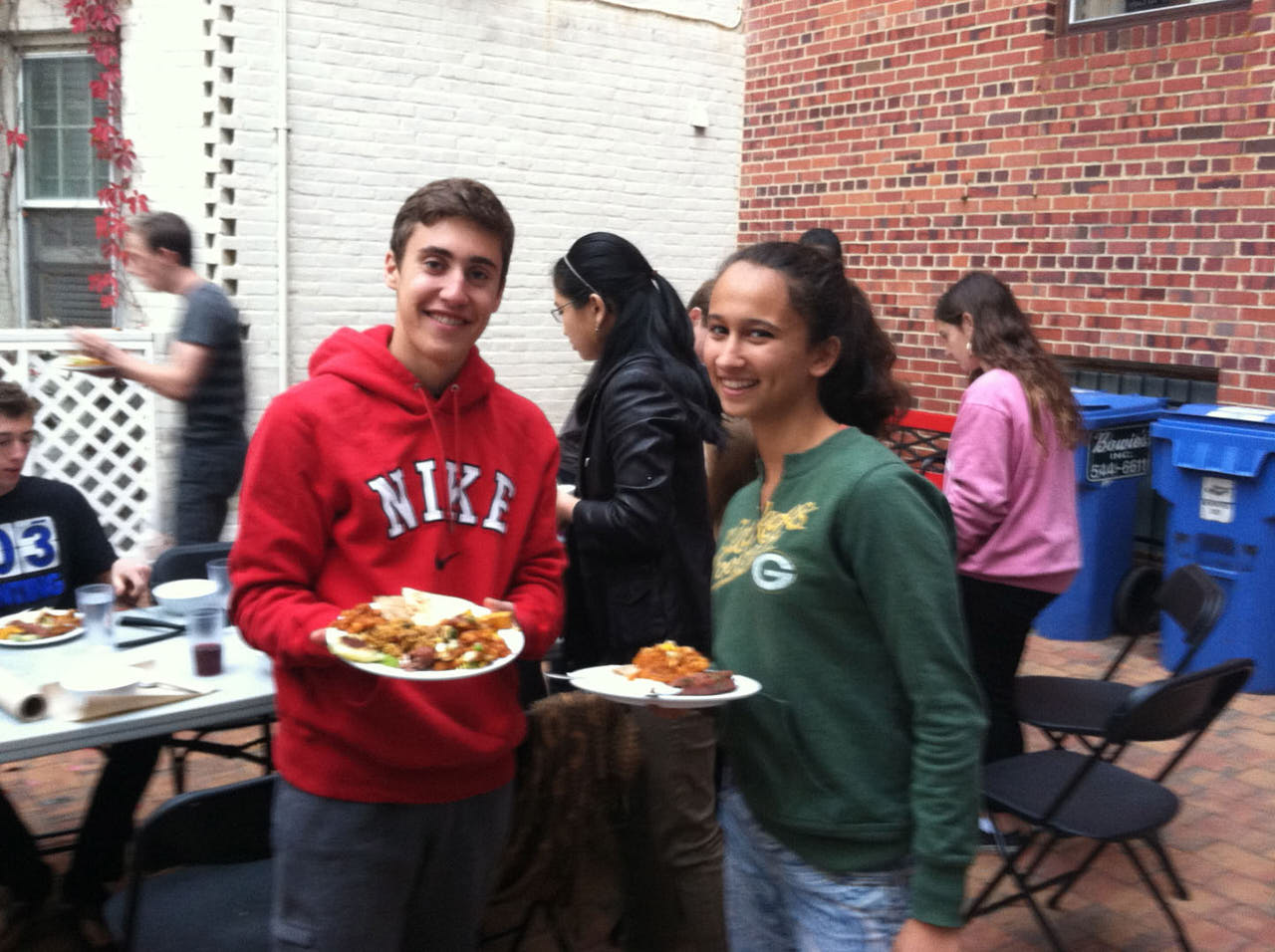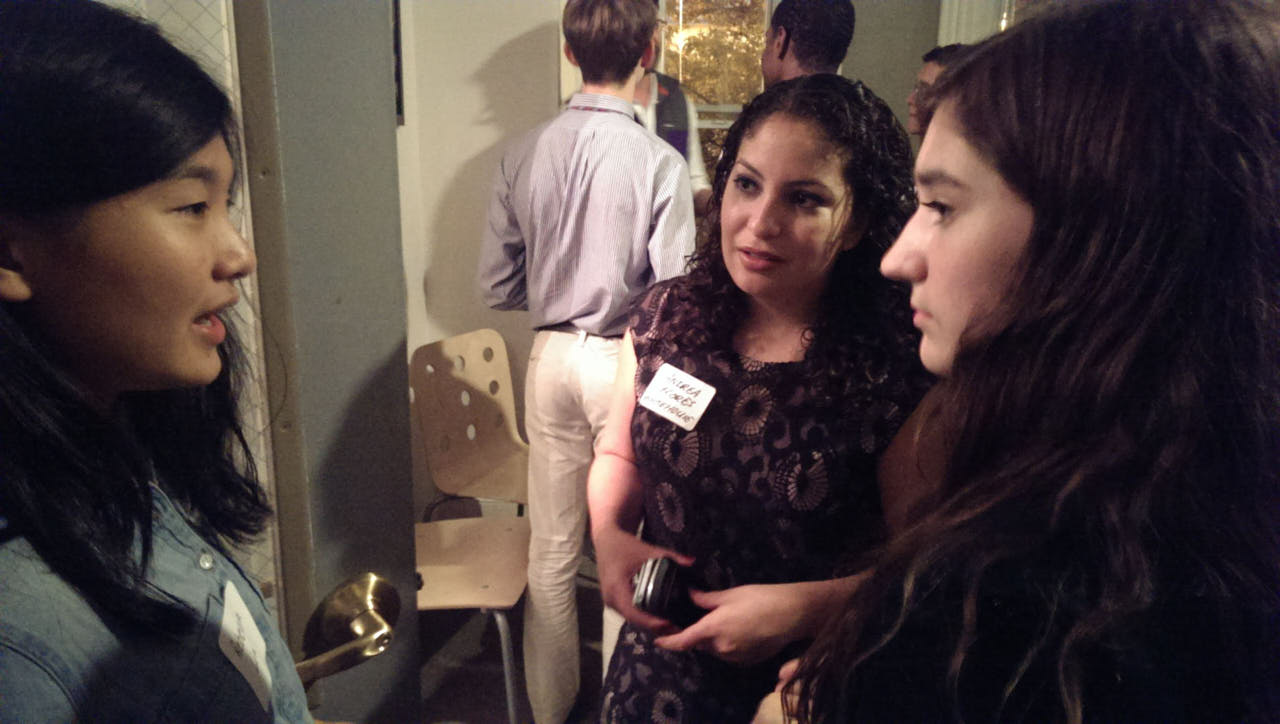An October to Remember
What a terrific month it has been! After our speechwriting Master Class with Lissa Muscatine, who would later accept the SEGL Golden Mug Award at our Homecoming Gala, we turned a corner in our Ethics and Leadership class and began looking toward our capstone projects.
The first step was The Odyssey, a two-week personal journey that each student undertakes as an SEGL right-of-passage. Week one (which was actually a week late this year due to the government shutdown) is a secret solo expedition of sorts that is best not explained here; suffice it to say that at our traditional (and secular) Quaker-style meeting afterward the students were full of profound reflections about themselves and how they want to bring change to our world.
Week two is a bit less secret: given her or his experience this semester (including the first week of The Odyssey), each student designs her or his own case study: discovering and corresponding with experts, setting up appointments, creating an itinerary, creating and asking questions, and taking notes. And there is little doubt that this group had the most successful week two Odyssey experience in SEGL history: the line-up included members of Congress, think tank leaders, activists, business leaders, and academics.
Why do The Odyssey? In the spring of 2010, our faculty read a piece by the noted Yale University professor John Lewis Gaddis. The piece describes a famous “Grand Strategy” course offered at Yale, which includes an opening “school of the classics” (in which students are exposed to classic ideas and theories in order to build their knowledge base), a closing “school of responsibility” (in which students are pushed in an elaborate crisis simulation), and a central, Odyssey-like “school of surprise.” Having already arrived at roughly the same opening and closing ideas, we were inspired to create a practical, solo experience that would force students to use their SEGL knowledge toolkits in order to prep them for real responsibility in the future. (You can download the speech that inspired the Odyssey here.)
After the Odyssey, we look toward the three main capstone projects that each SEGL student creates: the ethical Credo, the collaborative policy document, and the social venture business plan. This semester we are thrilled to have a social venture coach, Joe Weinstein, who works directly with our students over the course of the semester to prep them for their capstone. Weinstein spent years at the Bill & Melinda Gates Foundation as a global health program officer and now is the Director of Strategic Initiatives and Planning at Arabella Advisors, a leading consulting firm for philanthropic donors (he also has an MBA and M.S., in International Affairs, from Georgetown). In short, he has an enormous amount of experience determining what makes a promising venture.

Our first social venture week put the students into four groups of six. Each group visited a different DC social initiative (the Whitman-Walker Clinic, So Others Might Eat, the SEED School, and the Capitol Hill Arts Workshop) as representatives of the imaginary “Alvin Fridie Foundation’ (yes, that’s Alvin, our science teacher!), which had $5 million to contribute to the greater DC area. They researched each organization to determine strengths and weaknesses given the Fridie Foundation’s mission and criteria for funding. These four groups then divided into six new groups of four. In each of these new groups all four members had visited a different venture. And so the debates began: which organization had the soundest finances? The biggest need? The strongest leadership? The best prospects for scalability?
On that Friday, Weinstein returned to play the Director of the Fridie Foundation. Each group suggested a different funding allocation strategy, and each was forced to defend it. In an unexpected twist, Weinstein then gave all six groups ten minutes to agree on one final funding strategy; as you might expect, the conversation was intense! (We’ll let the students tell you the final allocation!) Later, as the students reflected as a group, many began to realize the point of the exercise: they could apply the lessons they learned about making an organization worthy of funding to their own SEGL venture project.
Meanwhile, a few memorable extras from this month:
- On Wednesday the 16th, our students participated in an historic moment: as the House voted to end the 16-day government shutdown and raise the debt ceiling, we were in the gallery watching everything up close. It definitely pays to live in the closest residence to the Capitol!

- On Halloween, many of our students chose to trick-or-treat down East Capitol Street, one of the city’s most famous locations for outlandish Halloween decorations (and, of course, right next door!). A few days beforehand, Science teacher Alvin Fridie led us in a pumpkin-carving extravaganza.
- Our Homecoming weekend was a huge success. We also received roughly $50,000 in donations (our most ever at Homecoming!) to support SEGL’s Kenan Trust scholarship endowment challenge.
- On Friday the 1st, our students participated in a networking event, mingling with some of DC’s young leaders. We had guests join us from local non-profits, consulting firms, schools, and the federal government.

- This past weekend, thanks in part to a generous SEGL family, we had a Diwali (the Hindu “Festival of Lights”) celebration in the dorms. Part of SEGL’s vision is to help students understand different cultures and world views, and the (optional) Indian feast and lamp-lighting we shared was a great learning experience for all who participated.
- Following the Saturday evening Diwali ceremony we had our traditional…well, it’s another secret SEGL tradition–you’ll have to ask an SEGL student (or graduate)!
7. In another SEGL rite-of-passage, each English student successfully memorized and delivered the St. Crispin’s Day speech from Shakespeare’s Henry V, which we read in English class. Scroll down for two different student interpretations of the speech.
Here’s to an even more memorable November!










